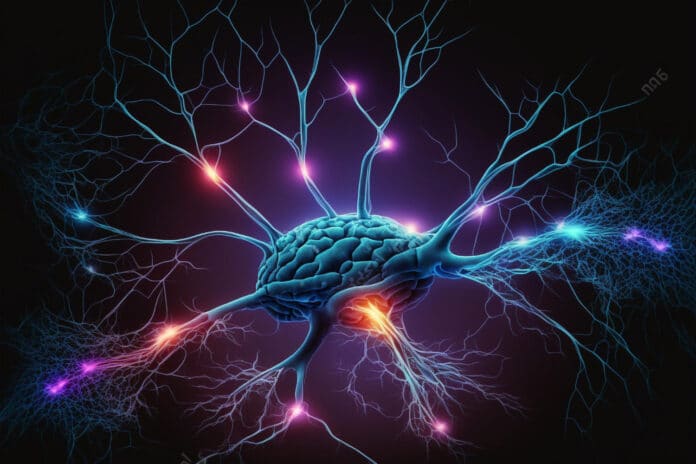How does the brain adapt changing world with relatively static anatomy?
The brain’s connectivity is an important component. However, explaining its dynamics and function requires the addition of another piece to the puzzle: receptors.
We have now made progress in our understanding of the distribution of receptors throughout the brain thanks to a new mapping by Human Brain Project (HBP) researchers from the Forschungszentrum Jülich (Germany) and Heinrich-Heine-University Düsseldorf (Germany), in cooperation with researchers from the University of Bristol (UK), New York University (USA), Child Mind Institute (USA), and University of Paris Cité (France).
On incredibly thin in vitro brain slices, scientists employed autoradiography to evaluate the density of neurotransmitter receptors. In 109 areas of the macaque cortex, they evaluated the density of 14 different neurotransmitter receptor types. This information was then combined with various structural factors to create neuroimaging templates.
HBP researchers have discovered a primary and secondary gradient of receptor expression per neuron. To put it another way, they mapped receptor densities across the cortex. They identified two main arrangements, shedding light on the links between molecular and neuron organization of the cortex.
Nicola Palomero-Gallagher, a researcher at the Forschungszentrum Jülich, said, “These two major axes of receptor organization in the macaque cortex align with two different functional systems, namely the sensory-cognitive and the external-internal cognition networks. This is the first time that such an association has been described.”
Scientists then combined the new neurotransmitter receptor data with multiple layers of anatomical and functional data onto a common cortical space within the cortical surface of Yerkes19, a frequently used non-human primate template. Only a few studies have combined in vivo and in vitro imaging of macaque brains. Creating openly-accessible maps of receptor expression across the cortex that integrate neuroimaging data could speed up translation across species.
Palomero-Gallagher says, “It is being made freely available to the neuroscientific community so that they can be used by other computational neuroscientists aiming to create other biologically informed models.”
Journal Reference:
- Sean Froudist-Walsh, Ting Xu, Meiqi Niu, Lucija Rapan, Ling Zhao, Daniel S. Margulies, Karl Zilles, Xiao-Jing Wang, Nicola Palomero-Gallagher. Nature Neuroscience. 19 June 2023. DOI: 10.1038/s41593-023-01351-2
